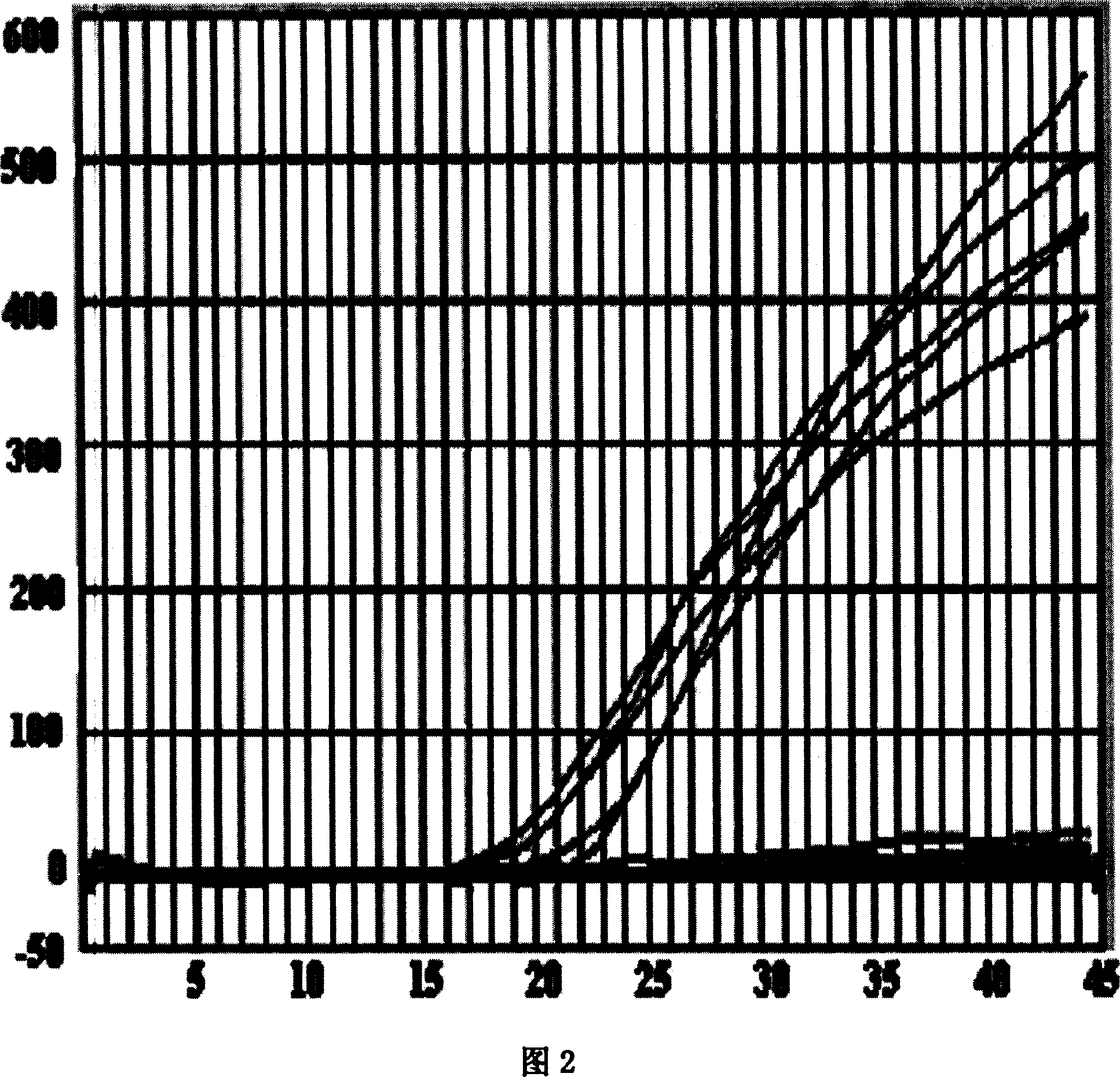Reed fescue and lolium perenne endophytic fungus real-time fluorescent PCR detecting method
A technology of endophytic fungi and reed-like fescue, applied in biochemical equipment and methods, biological testing, fluorescence/phosphorescence, etc., can solve the problems of slow growth, time-consuming, difficult identification, etc., and achieve strong specificity and high sensitivity Effect
- Summary
- Abstract
- Description
- Claims
- Application Information
AI Technical Summary
Problems solved by technology
Method used
Image
Examples
Embodiment 1
[0037] Embodiment 1: the collection and cultivation of relative species of endophytic fungi in pastures and the isolation and cultivation of N.coenophialum and N.lolii in imported grass species;
[0038] The strains involved in the experiment include N.coenophialum and N.lolii purchased from the American Culture Bank and their related species N.huerfanum, N.chisosum, N.aotearoae, N.sp., and N.coenophialum isolated and cultured in our laboratory There are 14 strains of 6 species and N.lolii, see Table 1.
[0039] Table 1: Test strains
[0040] strain number
species name
Host
host source
TJN1
TJN2
TJN3
TJN4
TJN5
TJN6
TJN7
TJN8
TJN9
TJN10
TJN11
TJN12
TJN13
TJN14
N.coenophialum
N.coenophialum
N.coenophialum
N.coenophialum
N.coenophialum
N.lolii
N.lolii
N.lolii
N.lolii
N...
Embodiment 2
[0045] Example 2: Aniline Blue Staining Microscopic Examination of Imported Grass Seeds Carrying N.coenophialum and N.lolii
[0046] The seeds involved in the experiment include reed fescue and perennial ryegrass seeds imported from Tianjin port in recent years, each of 4 varieties, as shown in Table 2.
[0047] Table 2: Seeds tested
[0048] Numbering
species name
Variety
plant origin
1
2
3
4
5
6
7
8
F. arundinacea
F. arundinacea
F. arundinacea
F. arundinacea
L.perenne
L.perenne
L.perenne
L.perenne
Ky31
Rebel sentry
Southeast
Bargena II
Gator
Victorian
MD warrior
Turf
62.5%
63%
53%
0
89.5%
33.3%
68.6%
0
U.S
U.S
U.S
U.S
U.S
new Zealand
Australia
U.S
[0049] 1. Solution preparation
[0050] 5% NaOH solution: NaOH 25 g, an...
Embodiment 3
[0056] Example 3: Mycelial genomic DNA and genomic DNA extraction of N. coenophialum and N. lolii from single seeds
[0057] The genomic DNA of mycelium and the genomic DNA of N.coenophialum and N.lolii in single seeds were extracted using Shanghai Sangon genomic DNA purification kit (No. SK1252).
PUM
 Login to View More
Login to View More Abstract
Description
Claims
Application Information
 Login to View More
Login to View More - R&D
- Intellectual Property
- Life Sciences
- Materials
- Tech Scout
- Unparalleled Data Quality
- Higher Quality Content
- 60% Fewer Hallucinations
Browse by: Latest US Patents, China's latest patents, Technical Efficacy Thesaurus, Application Domain, Technology Topic, Popular Technical Reports.
© 2025 PatSnap. All rights reserved.Legal|Privacy policy|Modern Slavery Act Transparency Statement|Sitemap|About US| Contact US: help@patsnap.com



